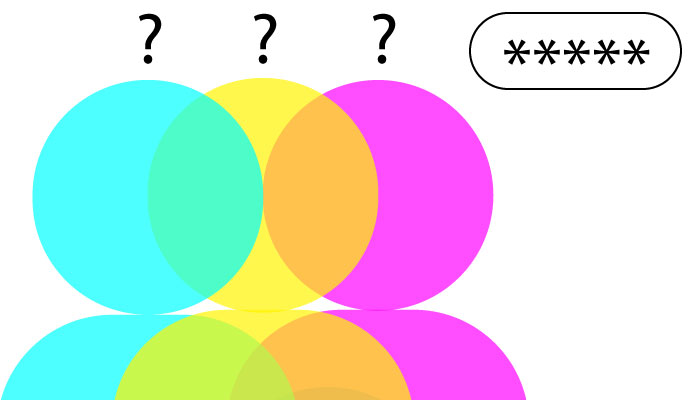Beyond Borders: Understanding European Diversity Month Through a Global Lens
Organizer: European Commission
Goal: Promote efforts in building equal and inclusive environments for all in Europe.
Activities: It’s not a top-down program with set activities. Instead, the Commission encourages organizations and companies across Europe to hold their own internal and external events focused on D&I throughout the month of May.
As we immerse ourselves in European Diversity Month 2024, it presents a fitting occasion to explore the multifaceted landscape of diversity and inclusion, especially when juxtaposed with our transatlantic counterparts in the US. Nestled in the dynamic hub of Berlin, Germany, our company operates on a global scale, affording us a distinctive perspective to scrutinize the approaches to D&I across different contexts.
Navigating Diversity in Germany: Unveiling the Nuances of D&I Discourse
In Germany, discussions revolving around D&I traditionally revolve around gender equality and LGBTQIA+ rights. However, recent years have witnessed a commendable expansion to encompass the inclusion of individuals with disabilities. Despite this progress, questions linger about the treatment of other dimensions of diversity, notably ethnicity and nationality. Europe, celebrated for its cultural richness, consists of 46 countries, including transcontinental countries such as Russia and Turkey. However, within the European Union (EU), which is a subset of Europe, there are 27 member states. As for languages, the European Union recognizes 24 official languages, although there are estimated to be over 200 languages spoken in Europe.
Challenges Across Europe: Bridging the Gap in Multicultural Societies
While Europe prides itself on its diverse tapestry, the emphasis on multiculturalism occasionally inadvertently reinforces rifts between nations and societies. Regrettably, this scenario offers a breeding ground for extremist factions to capitalize on nationalist sentiments, intensifying existing tensions. The UK’s departure from the European Union1 has highlighted complexities in managing diversity and inclusion within its borders.
Lessons from the US: Harnessing Unity Amidst Diversity
In contrast, the US boasts a storied history of immigration, significantly shaping its cultural fabric. What sets the US apart is its unparalleled ability to cultivate a profound sense of belonging among its populace, transcending diverse backgrounds. The concept of being “American” transcends ethnic, cultural, and linguistic boundaries, fostering a shared identity that fosters unity amidst diversity.
Europe’s Path to Global Leadership
As Europe navigates the intricate terrain of diversity and inclusion, there are invaluable lessons to be gleaned from its transatlantic counterparts. While celebrating multiculturalism, it’s imperative to cultivate a sense of unity and belonging that transcends national borders. By fostering inclusive societies where every individual feels valued and embraced, Europe can ascend to its full potential.
Learn more about European Diversity Month 2024
- The United Kingdom officially left the European Union on January 31, 2020, following the result of the 2016 referendum in which a majority of British voters chose to leave the EU. ↩︎




 English
English Deutsch
Deutsch Українська
Українська Polski
Polski עִבְרִית
עִבְרִית Türkçe
Türkçe العربية
العربية Français
Français Italiano
Italiano Español
Español 繁體中文
繁體中文 简体中文
简体中文 Shqip
Shqip Bosanski
Bosanski Български
Български Hrvatski
Hrvatski Čeština
Čeština Nederlands
Nederlands Suomi
Suomi Српски језик
Српски језик Ελληνικά
Ελληνικά Русский
Русский Română
Română Português
Português فارسی
فارسی ਪੰਜਾਬੀ
ਪੰਜਾਬੀ Svenska
Svenska Afrikaans
Afrikaans አማርኛ
አማርኛ Հայերեն
Հայերեն Azərbaycan dili
Azərbaycan dili Euskara
Euskara Беларуская мова
Беларуская мова বাংলা
বাংলা Català
Català Cebuano
Cebuano Chichewa
Chichewa Corsu
Corsu Dansk
Dansk Esperanto
Esperanto Eesti
Eesti Filipino
Filipino Frysk
Frysk Galego
Galego ქართული
ქართული ગુજરાતી
ગુજરાતી Kreyol ayisyen
Kreyol ayisyen Harshen Hausa
Harshen Hausa Ōlelo Hawaiʻi
Ōlelo Hawaiʻi हिन्दी
हिन्दी Hmong
Hmong Magyar
Magyar Íslenska
Íslenska Igbo
Igbo Bahasa Indonesia
Bahasa Indonesia Gaeilge
Gaeilge 日本語
日本語 Basa Jawa
Basa Jawa ಕನ್ನಡ
ಕನ್ನಡ Қазақ тілі
Қазақ тілі ភាសាខ្មែរ
ភាសាខ្មែរ 한국어
한국어 كوردی
كوردی Кыргызча
Кыргызча ພາສາລາວ
ພາສາລາວ Latin
Latin Latviešu valoda
Latviešu valoda Lietuvių kalba
Lietuvių kalba Lëtzebuergesch
Lëtzebuergesch Македонски јазик
Македонски јазик Malagasy
Malagasy Bahasa Melayu
Bahasa Melayu മലയാളം
മലയാളം Maltese
Maltese Te Reo Māori
Te Reo Māori मराठी
मराठी Монгол
Монгол ဗမာစာ
ဗမာစာ नेपाली
नेपाली Norsk bokmål
Norsk bokmål پښتو
پښتو Samoan
Samoan Gàidhlig
Gàidhlig Sesotho
Sesotho Shona
Shona سنڌي
سنڌي සිංහල
සිංහල Slovenčina
Slovenčina Slovenščina
Slovenščina Afsoomaali
Afsoomaali Basa Sunda
Basa Sunda Kiswahili
Kiswahili Тоҷикӣ
Тоҷикӣ தமிழ்
தமிழ் తెలుగు
తెలుగు ไทย
ไทย اردو
اردو O‘zbekcha
O‘zbekcha Tiếng Việt
Tiếng Việt Cymraeg
Cymraeg isiXhosa
isiXhosa יידיש
יידיש Yorùbá
Yorùbá Zulu
Zulu